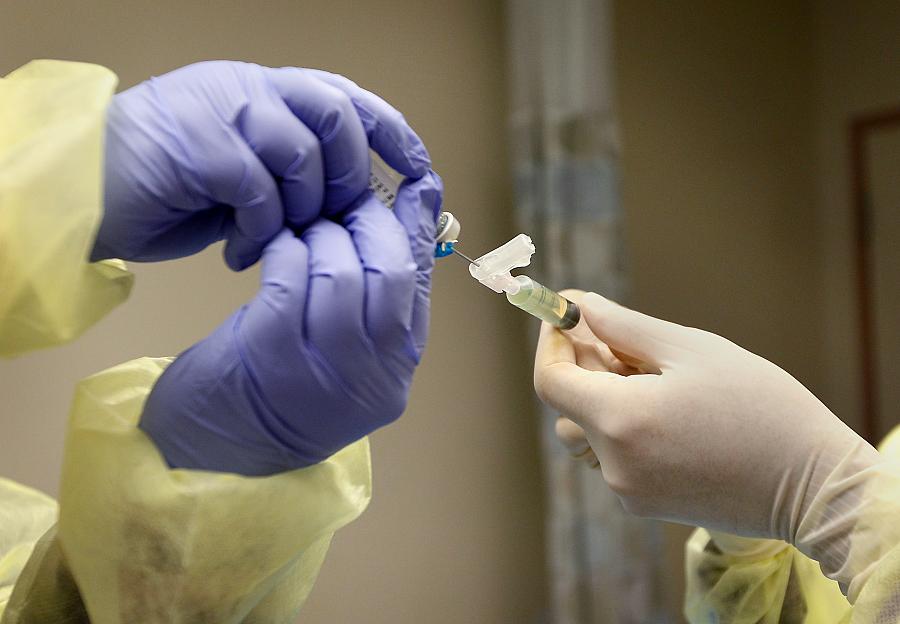Just One Breath: CDC Stands Up and Takes Notice of Valley Fever

When we first started reporting on valley fever last year, we heard repeatedly that the reason the disease had been allowed to kill and injure so many people was because it didn't affect people in the power centers for health policymaking.
George Rutherford, professor and head of the Division of Preventive Medicine and Public Health at the University of California, San Francisco, told me:
Valley Fever is not occurring in DC. It’s and not occurring in Atlanta, and it’s not occurring in Bethesda. It’s invisible to the most important policymakers when it comes to health funding. And that won’t change unless the need for a vaccine is elevated in some way.
Well, Atlanta is finally taking notice.
The Centers for Disease Control and Prevention have been incredibly responsive to the series, for which I serve as project editor, working with reporters and editors at seven California news outlets – both print and broadcast as well as in English and Spanish. Last year, as our series was just starting to roll out, the CDC contacted me to ask if we would work with them on creating new materials to highlight valley fever on the CDC website. Never in my reporting career have I been asked to work with a government agency on helping improve its public outreach efforts. But, fortunately, Michelle Levander, who launched and nurtured the Reporting on Health Collaborative, funded by a gift from the California Endowment, had hired one of the reporters from the series – Kellie Schmitt – to work as a community liaison to help engage readers in California in the series. It seemed like a perfect job for her.
She worked ably with the CDC, which in another rare move, gave the reporting series credit and generously linked to the work. That made all of us who were part of the effort feel like the work was starting to make a difference. But that was just the prelude.
Last week, the CDC released a new study conducted by one of our sources for the series – Dr. Benjamin Park – and other experts in fungal diseases. The study confirmed much of what the reporters on Just One Breath had found. As Rachel Cook at the Bakersfield Californian, writing for the collaborative, reported:
The Centers for Disease Control and Prevention confirms in a new research article today what doctors, epidemiologists and people who suffer from valley fever have experienced first-hand — cases of the fungal disease rose at stunning rates over the last decade, especially in California and Arizona.
The CDC’s analysis addresses the findings reported in Just One Breath, a series of news stories on valley fever by the Reporting on Health Collaborative published in The Californian and other outlets. The series chronicled the rise in valley fever cases and deaths and the lack of attention by state and federal policymakers.
“I do think that the reporting series helped to put (valley fever) at the forefront, especially in California,” said Dr. Benjamin Park, medical officer in the CDC’s Mycotic Diseases Branch and the study’s senior author.
And Rebecca Plevin, also a collaborative member now reporting for Valley Public Radio, quoted Park saying:
What’s really interesting that we found is that the number of cases, the incidence of these cases, increased steadily throughout this time period, and really accelerated over the last few years.
Atlanta waking up to the problem meant that the rest of the world started to wake up, too.
NBC wrote Valley Fever on rise in Southwest, CDC says.
WebMD wrote Valley Fever Fungal Infection on Rise in Southwest.
The Los Angeles Times wrote Valley fever cases jump in California, other southwestern states.
The reporters and editors on the series first talked in earnest about how to tackle valley fever about this time last year. Our hope was to raise awareness, first and foremost, but also to do more than just point to a problem. We wanted to provide the community with the tools to start creating solutions.
One of the key areas we pointed to was a lack of research on the trends in the disease. Hearing that the CDC was going to be publishing this study was both an unexpected validation of the work and an encouragement to do more of the same. You can expect us to keep monitoring the valley fever discussion and offering new ways for people to fight what has for too long seemed inevitable.
Photo credit: Duke University

